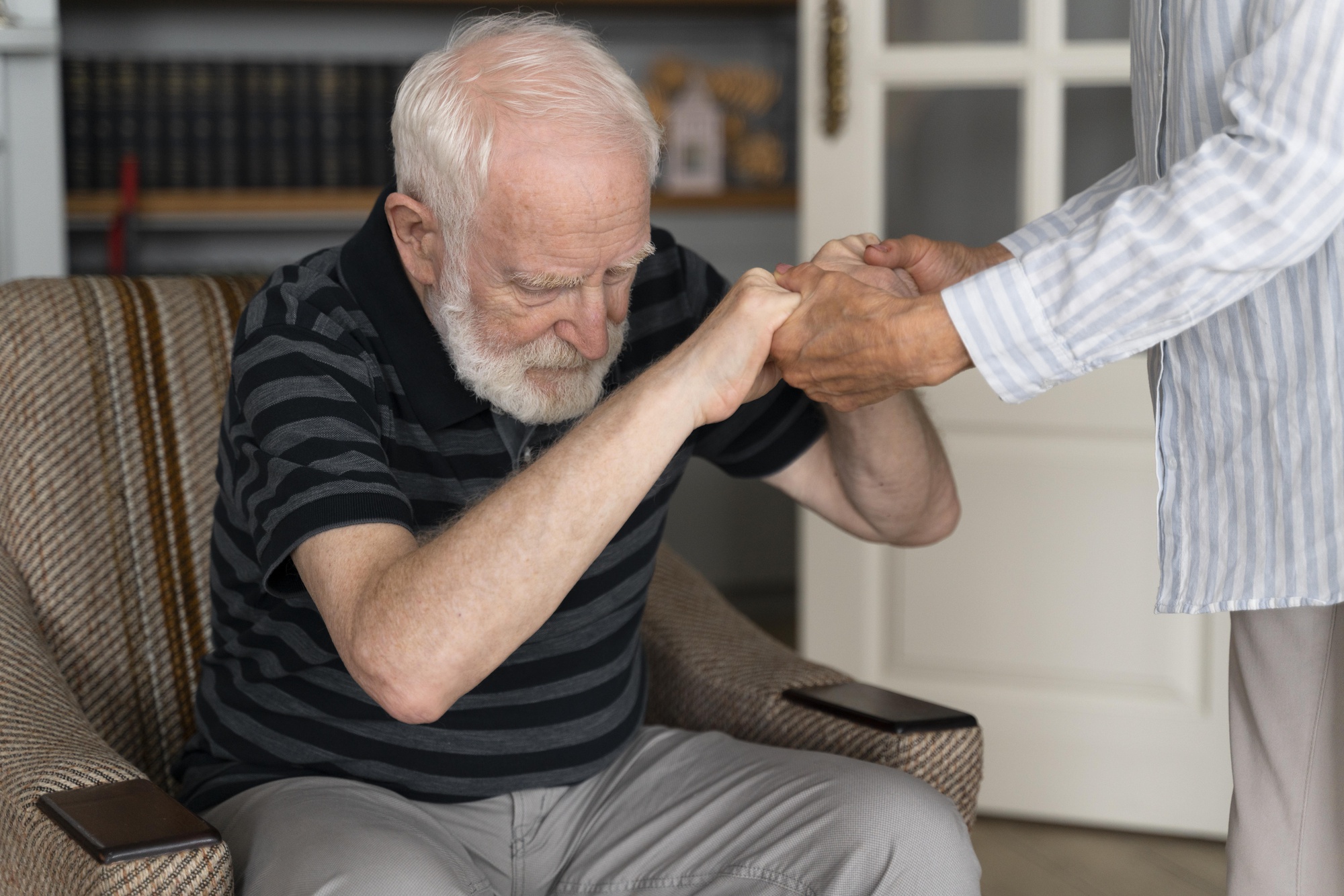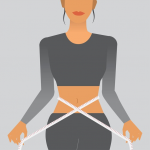The disease was first described by the British doctor James Parkinson in 1817 and Dr. Parkinson wrote the disease as “shaking paralysis”.
What you wonder about Parkinson’s disease, which develops in old age, slowing down in movements, tremors in the hands and more rarely in the feet at rest, stiffness in the muscles and loss of balance…
What is Parkinsonism?
Rather than a specific disease, the word Parkinsonism connotes a condition characterized by a series of symptoms that occur due to a variety of causes. The most important of these symptoms are trembling of the limbs, stiffness of the muscles and slowness of body movements. Other symptoms that can be added to this triad include a stooped posture, walking with small steps and shuffling feet, and speaking softly, quickly and in the same tone. Parkinson’s disease has a distinct place among the various forms of parkinsonism, with its unique symptoms and changes in the brain, and will be discussed in detail later.
Tremors in Parkinsonism may affect mainly the hands and feet, sometimes the lips, tongue, chin and rarely the trunk. The tremor in the hands or feet occurs at rest and disappears during movement. For example, during the movement of reaching out and grasping an object, the tremor in the hand disappears and reappears when resting. The medical term for tremor is “tremor”. The fact that it occurs at rest helps to distinguish it from the various tremors that can be seen in other diseases.
In Parkinsonism, there is a stiffness in the muscles that does not change even at rest. When the examining physician passively moves the limbs, he or she encounters a constant and unchanging resistance. However, although the affected muscles seem unable to relax, this is a stiffness that can be shaped as desired. This stiffness of the muscles is called “rigidity”.
The third symptom is a slowing down of body movements and is called “bradykinesia” (from the Greek “brady” meaning slow and “kinesis” meaning movement). It is a complex phenomenon characterized by hesitation when starting a new movement, slowness while performing that action, and rapid fatigue. Bradykinesia also includes the inability to perform automatic movements that we do without realizing it, such as blinking the eyes, swinging the arms while walking, descriptive hand or body movements while speaking, or movements that create facial expressions. All these movements are slowed down in patients.
Causes of Parkinsonism
The complex symptoms of Parkinsonism are caused by the malfunctioning of a nucleus of specialized nerve cells in the brain called the “substantia nigra”. This nucleus, which means “black matter” in Latin, is known to be deeply dark in color, which is immediately recognizable to the naked eye at autopsy. When viewed under a microscope, the nerve cells within this nucleus are densely packed with dye (pigment) particles.
The nerve cells of the substantia nigra make and store a chemical substance called “dopamine”. These cells are connected to the nerve cells of a structure called the “corpus striatum” (striated body), which is located deep in the brain and consists of a small adjacent gray matter. The dopamine made by the cells of the substantia nigra is transported by nerve fibers to the corpus striatum and acts as a chemical transmitter between the cells there. If the cells of the substantia nigra are damaged, they cannot make and store dopamine and the striatum lacks dopamine. When this deficiency is severe, symptoms of parkinsonism begin to appear.
Causes of dopamine deficiency in the brain:
1- The nerve cells of the substantia nigra can be destroyed for various reasons: The most common example of this is Parkinson’s disease. Other causes include vascular diseases and tumors of this part of the brain, destructive effects of certain chemicals, encephalitis (inflammation of the brain tissue).
2- Some drugs inhibit the natural action of dopamine in the striatum, so that dopamine cannot transmit its chemical message and the result is a dopamine deficiency. Some drugs used in psychiatric patients (major tranquilizers), blood pressure lowering drugs containing reserpine, many drugs used against vomiting can cause parkinsonism, but this condition improves when the responsible drug is stopped.
3- In cases where nerve cells in the striatum are damaged as well as cells of the substantia nigra, the picture is similar to that of dopamine deficiency. In these diseases, known as “multisystem degenerations”, there are neurological symptoms that involve other parts of the brain besides parkinsonism. A small proportion of these diseases are known to be inherited.
Without going into further detail, it can be seen that there are many possible causes of parkinsonism, the most common of which is Parkinson’s disease.
First Symptoms of Parkinson’s Disease
The symptoms of Parkinson’s disease often start very insidiously and slowly, so that patients are often unable to give an exact date of onset. By the time patients recognize the first symptom, some of the symptoms may have been present for a long time. A patient who presents with a tremor in one hand may be noticed not to swing one arm while walking in video films taken 5-6 years ago, or sometimes the patient may have a forward-leaning posture in old photographs. As a matter of fact, tremor is often the first symptom in the majority of Parkinson’s patients, while some patients are brought to the physician when tremor occurs, as in the example. Although some symptoms of Parkinson’s disease persist for a long period of time, it is not uncommon to see a doctor too late due to lack of knowledge about Parkinson’s disease.
Main Symptoms of Parkinson’s Disease
Tremor (Tremor)
Tremor, the most prominent of the three main symptoms of Parkinson’s disease, which are tremor, muscle stiffness and reduced movement, is usually the most common reason for the patient to consult a doctor. Tremor occurs in approximately 80% of Parkinson’s patients.
Tremor often occurs in one hand on one side, sometimes in one foot. The tremor may be limited to the tremor of a single finger or sometimes affect the tongue, lips and chin, but does not cause head or voice tremor.
The tremor may be a simple up-and-down arm and/or leg movement with small oscillations, or more often it may be a complex movement. It may be a slight outward rotation of the forearm, a back and forth movement of the thumb and index fingers, and a hand movement such as counting coins or rolling a pebble between the thumb and index finger. When the tremor occurs in the foot, it resembles the movement of pressing a pedal.
The tremor is regular and at a certain speed, with 5 or 6 beats per second. In Parkinson’s disease, the affected hand or foot trembles at rest, unlike the tremors seen in other diseases. The tremor disappears during sleep and when the limb starts to move. Nervousness, walking, being under stress or being overly occupied with mental activity increase the tremor. Thus, intermittent tremor can reflect the patient’s mood. For example, a patient who does not tremble when reading the newspaper at home may reappear when a visitor arrives. This aspect of tremor causes patients to become distressed in public and many of them give up being among friends because of it.
Patients can feel even subtle tremors that are not noticeable to the eye and perceive them as vibrations. Rarely, a tremor of the abdominal muscles is felt as if there is something trembling inside. Trembling of the diaphragm or chest muscles is felt as “palpitations” and the patient thinks there is a problem with the heart and seeks medical attention. This type of tremor can be detected on a cardiac electrocardiogram (ECG).
It should be emphasized that not all people with tremors have Parkinson’s disease. In healthy people, temporary tremors in the hands and legs may occur in stressful situations such as fear and excitement. In addition, in a benign, familial disease called “essential tremor”, which can be seen at any age, tremors occur in the hands when the arms are extended forward. In addition to hand tremor, head tremor can also be seen, especially in elderly patients. The treatment of this disease is different from Parkinson’s disease, as are many of its features. Other causes of tremor include the use of certain medications, overactive thyroid gland or diseases of the cerebellum.
Muscle stiffness (rigidity)
Some patients complain of a feeling of stiffness in their limbs. However, muscle stiffness is often not a complaint of the patient, but is recognized by the physician on physical examination by detecting the presence of resistance to passive movement. The physician tells the patient to relax and gently stretches and bends the patient’s limbs several times at the joints, looking for resistance around the joints against this passive movement. The constant presence of resistance to such passive movement is called “rigidity”. Normally, muscles should be soft and relaxed at rest, whereas in the presence of rigidity they are permanently tense even at rest and have a certain stiffness that can be palpated. In Parkinson’s disease, rigidity is most commonly found in joints such as the hand, ankle, elbow or knee.
Sometimes muscle stiffness is felt by the physician as if there is a “cogwheel” stuck in the joint. Patients may feel muscle stiffness as fatigue, stinging, pain or cramping. Stiffness of the muscles around the spine is less common, may cause back pain or lower back pain and is usually aggravated by bending forward. Stiffness of the calf and foot muscles can manifest as painful cramps.
Slowing of movements (bradykinesia)
Perhaps the most disabling symptom of Parkinson’s disease, the slowing of movement, or “bradykinesia”, develops early or late in every patient. Slowness of movement leads to a certain slowness in all activities in daily life. The repetition of movements at regular intervals and the range of motion of the joints are reduced. Initially mild difficulty in performing simple daily tasks, such as buttoning buttons, tying ties and shoes, writing and using cutlery, gradually increases. Over time, difficulties with most voluntary movements, such as eating and chewing food, rising from a low chair, getting in and out of an automobile, and turning from side to side in bed, become noticeable. In addition to the slowing down of the voluntary movements mentioned above, automatic, identical movements, such as blinking the eyes and swinging the arms when walking, are also reduced or lost.
Although the slowness of movement is very pronounced, the patients’ muscle strength, i.e. strength, is normal. The patient’s complaint in this respect is a general feeling of fatigue or stiffness in the limbs, for example, when controlling successive movements such as walking or brushing one’s teeth. Over time, such slowness of movement can make patients dependent on others. A patient with severe slowness may not have tremor or rigidity.
“Akinesia” refers to immobility and usually occurs in advanced stages of the disease. When Parkinson’s patients with this condition are observed over a long period of time, they lose the ability to make any visible movement: blinking, natural facial expressions (gestures), auxiliary movements such as correcting the sitting posture are not observed. Such patients simply sit still and stare with a fixed gaze.
Important Notice …The information used onkemhealth.com is not a substitute for consulting a physician or pharmacist. Our site does not aim to replace your doctor or pharmacist. Our site is not under legal responsibility for misunderstanding the information and the problems that may arise due to this. For a real diagnosis and treatment, the patient and the doctor must come face to face. The use of the information provided on this site is the sole responsibility of the user.









